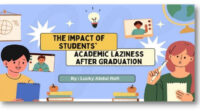Early childhood is a critical period for language development, where effective vocabulary learning lays the foundation for future communication and academic skills. Findings indicate that teachers utilize diverse methods such as singing, storytelling, playing, reading, and the Total Physical Response (TPR) technique.
These are supported by approaches like inquiry-based learning, behavioristic repetition, whole language immersion, and song-motion combinations. Additionally, learning models such as Problem-Based Learning (PBL), Game-Based Learning, and reinforcement-based strategies are frequently applied.
The use of media, including visual aids (flashcards, picture books), audio (songs), audiovisual (videos, apps), and kinesthetic tools (puzzles, manipulative games), is also essential to match children’s learning styles.
The study concludes that an integrated approach—combining engaging methods, contextual models, interactive media, and developmentally appropriate strategies—can significantly enhance vocabulary acquisition in early childhood education.
Methods to Improve Early Childhood Vocabulary
Vocabulary enhancement in early childhood plays an important role in supporting the development of their language skills as a whole. Based on the analysis of various literature sources, it was found that a common strategy used by educators in enriching children’s vocabulary is through the application of certain learning methods.
One approach that has been proven effective is the singing method, which is a teaching technique that uses songs as a medium to introduce and reinforce the understanding of new vocabulary. The singing method is an effective and fun approach to early childhood learning because it creates a relaxed and interactive learning atmosphere.
Songs with simple rhythms and lyrics that are close to children’s lives make it easier for them to absorb information naturally without feeling bored. This approach encourages children’s active involvement in learning through interesting activities.
Children not only hear and memorize vocabulary, but also actively participate by singing, moving, and interacting with peers. The use of singing methods can improve children’s mastery of English vocabulary and make it easier for them to understand the meaning of words in a fun way.
Baca juga: Pengaruh Pemilihan Tontonan yang Baik terhadap Perkembangan Bahasa Anak
In addition to the singing method, many educators also utilize the Total Physical Response (TPR) method in an effort to improve early childhood vocabulary acquisition. Total Physical Response is a language learning approach that integrates verbal commands with physical responses or body movements.
This strategy emphasizes the relationship between speech, instruction, and motor activity as a way to help children understand and remember vocabulary more easily.
In the context of early childhood, TPR is very suitable to be applied because learning is done through physical activities that are fun and in accordance with their developmental characteristics. This method is effective in introducing words related to actions or movements, and has been recognized as a popular approach to introduce basic English vocabulary in a natural and active way.
Furthermore, the play method is a learning approach that makes play activities the main means of delivering material and achieving learning objectives, especially in early childhood. This method is based on the principle that play is a natural way for children to learn, explore the environment, and develop their cognitive, social, motor and emotional abilities.
Through play activities such as role play, guess the picture, pairing word cards with pictures, or lettering games children will add to their vocabulary knowledge. The play method supports children to interact with peers, which indirectly enriches vocabulary through social communication.
When children engage in conversations during play, they learn to use words in meaningful contexts rather than simply memorizing them. The play method is able to create an effective, active, and child-centered learning experience in the development of language skills, especially Vocabulary.
Reading and storytelling methods can also improve vocabulary in children. Reading and storytelling are effective methods to enrich children’s vocabulary at an early age. Through stories, children are introduced to new words in a meaningful context, making them easier to understand and remember.
Book reading activities help children associate words with pictures. When reading a storybook, children hear new words spoken by the teacher or parent, as well as see visual illustrations that help associate the word with its meaning.
Meanwhile, storytelling encourages active engagement through intonation, expression, and movement. In storytelling, children do not only listen, but are often invited to answer questions, repeat words, or guess the content of the story, so they actively use new vocabulary directly.
Both methods not only increase vocabulary, but also develop children’s listening, thinking and language skills in a fun and interactive way.
Approaches to Improving Early Childhood Vocabulary
Based on the results of the article analysis, it was found that there are several approaches commonly used by teachers in improving vocabulary mastery in children aged 5-6 years. One approach that is widely applied is the song and movement approach.
This approach combines motor and musical elements, where children are invited to sing simple songs while performing movements that are relevant to the lyrics of the song. This approach can improve children’s memory and understanding of vocabulary because it is delivered in a fun way and in accordance with the characteristics of early childhood.
In addition, the inquiry approach is also one of the approaches used in vocabulary learning. In this approach, children are given the space to actively explore information, for example through educational video media such as YouTube that stimulates children’s curiosity and involvement during the learning process.
In this way, children do not only passively receive information, but also actively observe and process new vocabulary in a more meaningful context.
Furthermore, the behavioristic approach is also applied in teaching early childhood vocabulary. This approach emphasizes the importance of repetition and reinforcement in the learning process.
Children are encouraged to repeat the pronunciation of vocabulary continuously until they can remember and use it automatically. Although traditional, this approach is still relevant in the context of teaching basic vocabulary that requires memorization.
Another approach found in the literature analysis is the whole language approach. This approach introduces vocabulary to children as a whole in the context of a sentence or story, not in the form of words per word. Thus, children can more easily understand the meaning of vocabulary because they see its use directly in real situations.
In addition, this approach also helps children develop language skills as a whole, not just limited to vocabulary acquisition. Through these four approaches, teachers can adjust learning strategies to children’s learning styles, whether visual, auditory, or kinesthetic, so that vocabulary learning becomes more effective and fun.
Model for Improving Early Childhood Vocabulary
Learning models provide a systematic framework for implementing teacher strategies in the classroom, including in efforts to improve vocabulary mastery for children aged 5-6 years. Based on the results of the literature study, there are several learning models that are effectively applied in the context of early childhood education.
One of the models found is Problem-Based Learning (PBL). This model provides opportunities for children to solve simple problems through discussion and exploration with teachers and peers. In this process, children are challenged to think and use vocabulary in the context of problems close to their lives.
The PBL model is considered to be able to increase children’s active involvement and bring out the natural use of vocabulary during the problem- solving process.
Baca juga: Handling Speech Delay in Preschool Children
In addition, Game-Based Learning is also widely used as an effective learning model in introducing vocabulary. This model places play as the core of learning, such as through bingo games, interactive quizzes, and the use of digital applications such as Kahoot. Children learn without pressure because the activities are done in a fun atmosphere. This model also stimulates children’s social interaction, confidence and creativity in using language.
Another model that emerged in the study is the repetition and reinforcement-based approach, which draws on the behavioristic model. In its application, teachers use the drilling method to help children remember and master vocabulary through repetitive practice. Although not as interactive as the other models, this model is still effective in forming the basis of vocabulary acquisition in early childhood, especially in the early stages of learning.
With the application of these models, the vocabulary learning process becomes more directed, fun, and in accordance with the characteristics of child development. Choosing the right model also helps children to understand and use vocabulary more quickly in everyday life.
Media to Improve Early Childhood Vocabulary
Learning media has an important role in supporting the process of recognizing and strengthening vocabulary in children aged 5-6 years. The use of media that is in accordance with children’s learning styles such as visual, auditory, and kinesthetic, will help children understand and remember vocabulary more easily and enjoyably. Based on the results of the article analysis, the media used can be grouped into several types.
Visual media is one of the most commonly used. Media such as flashcards display images and words simultaneously, helping children associate vocabulary with concrete objects. Flashcards are widely used both conventionally and multimedia-based. In addition, picture cards and textbooks are also used to strengthen vocabulary recognition through pictures and simple story contexts that are close to children’s daily lives.
Audio media is used in the form of children’s songs and music that include specific vocabulary in the lyrics. Songs with simple and repetitive rhythms allow children to learn without feeling burdened and are fun. This media is suitable for children with auditory learning styles.
Audio-visual media combines elements of image, sound and motion, which makes learning more vivid and interactive. Examples of this media are YouTube learning videos, animated movies, and interactive educational apps such as Wordwall or Kahoot. The use of this media is proven to increase children’s engagement and understanding of vocabulary because it presents learning in an interesting and easy-to-understand format.
Kinesthetic and manipulative media are also found in children’s vocabulary learning. Media such as loose parts, puzzles, and crafting activities provide opportunities for children to learn through touch, movement, and direct exploration of concrete objects. These activities support kinesthetic learning styles and strengthen children’s understanding through real experiences.
With various types of media used, teachers can adjust learning strategies to the needs of children. A variety of media not only helps improve vocabulary, but also fosters children’s interest in learning and creates an active, creative and fun classroom atmosphere.
Interesting media determines children’s interest in learning and the results of their learning, therefore teachers must be able to adjust the right media because the media has a big influence on the success of learning. In addition, the media also helps teachers deliver material more effectively and efficiently, creating a more lively and fun classroom atmosphere.
Penulis:
- Dwi Yuliana
- Manisha Anatasya
- Najlatul Fatiyah
- Tiana Sari
- Windi Dwi Andika
- Yenny Areza
Mahasiswa Universitas Sriwijaya
Editor: Salwa Alifah Yusrina
Bahasa: Rahmat Al Kafi
Ikuti berita terbaru Media Mahasiswa Indonesia di Google News















